
In den letzten Jahren habe ich viele Zelte und Tarps entworfen. Viele Ideen wurden wieder verworfen, einige tatsächlich genäht. Aus diesen Experimenten konnte ich die für mich wichtigsten Kriterien für „das Zelt“ für zwei Leute ableiten.
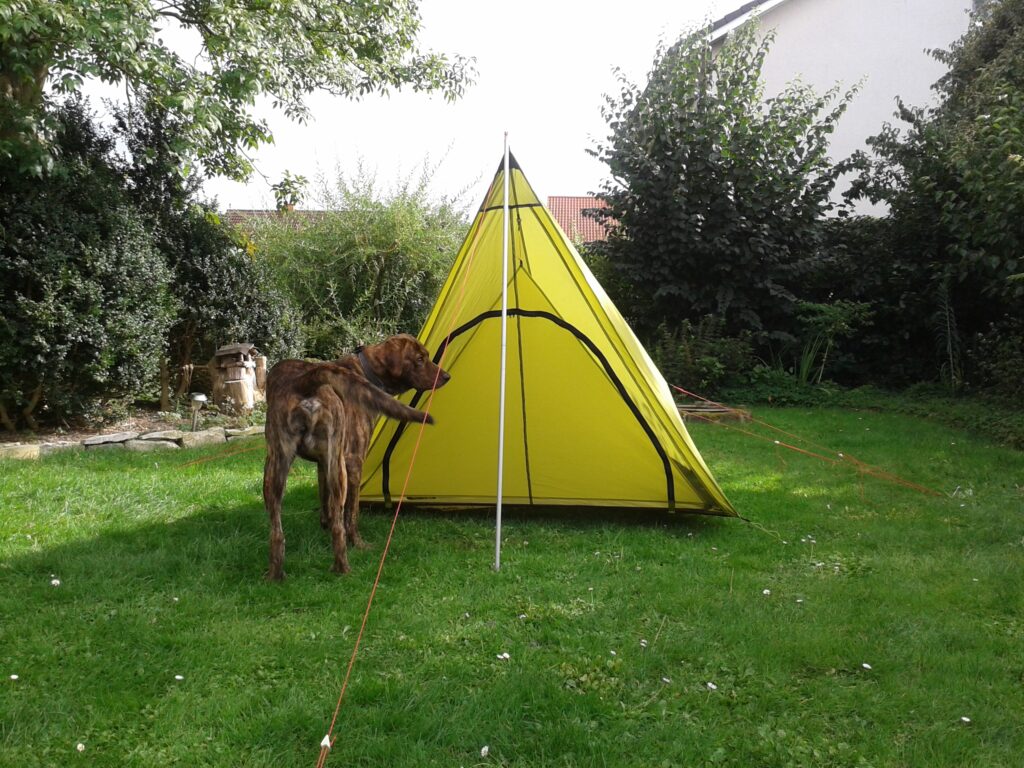
Das Zelt ist ein Längslieger. Damit braucht man nur einen Eingang für beide und spart den zweiten Reißverschluss und den zweiten Beak.
Die Front hat einen Überhang von gut 60cm. Dadurch ist der Eingang vor Regen geschützt, man kann darunter bei schlechtem Wetter kochen und die Stange steht beim Ein- und Aussteigen nicht im Weg.
Im Inneren befindet sich ein Beak, den man bei schlechtem Wetter, oder als Sichtschutz, aufspannen kann. Dafür muss man nicht einmal die Meshfront öffnen.
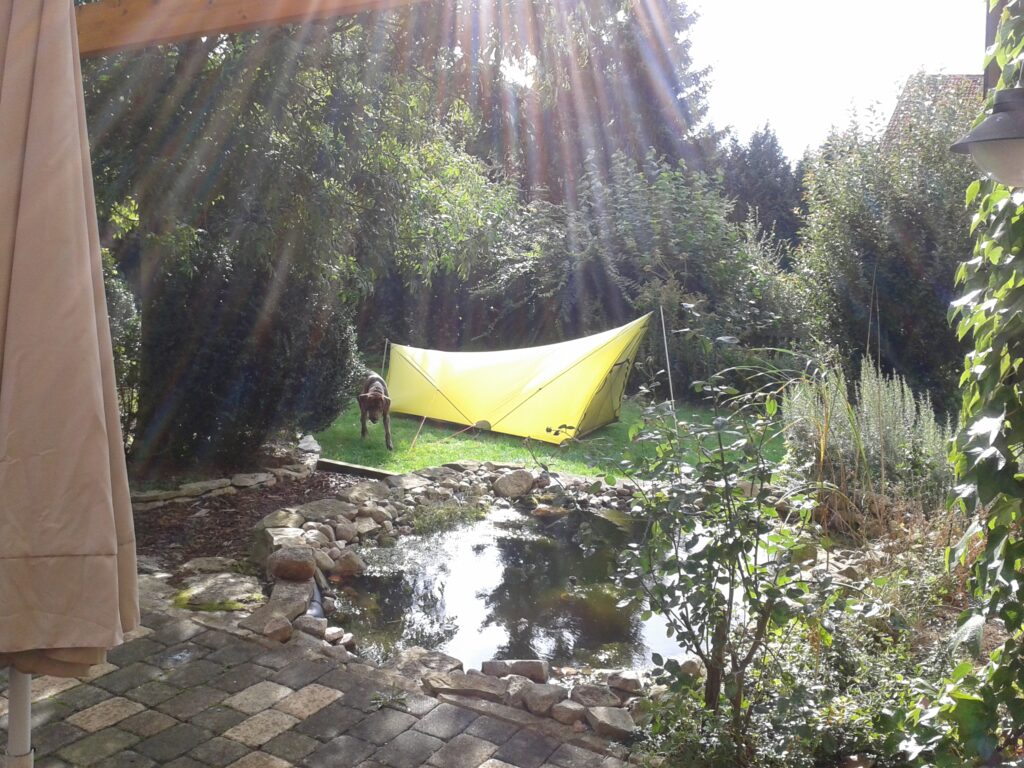
Der höchste Punkt vom A-Frame befindet sich am Kopfende, der niedrigste am Fußende. Dadurch strömt Luft vom tiefsten Punkt in das Zelt, erwärmt sich dort durch Atem und Körperwärme und verlässt das Zelt ungehindert am höchsten Punkt. Kondenswasser an der Innenseite entstand durch die konstante Luftbewegung so in den drei Jahren, die ich dieses Zelt nun nutze höchstens drei Male.
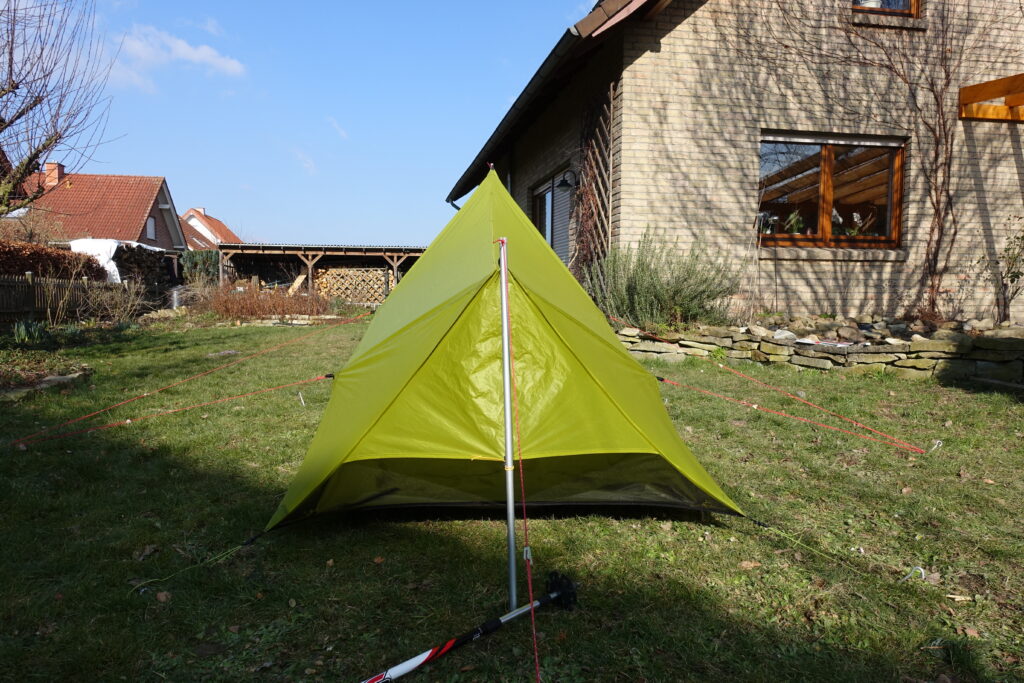
Das Fußende wird von einem äußeren Beak vor Regen und Wind geschützt. Diese Seite stelle ich daher immer in den Wind. Das verbessert auch die Luftbewegung im Inneren noch zusätzlich.
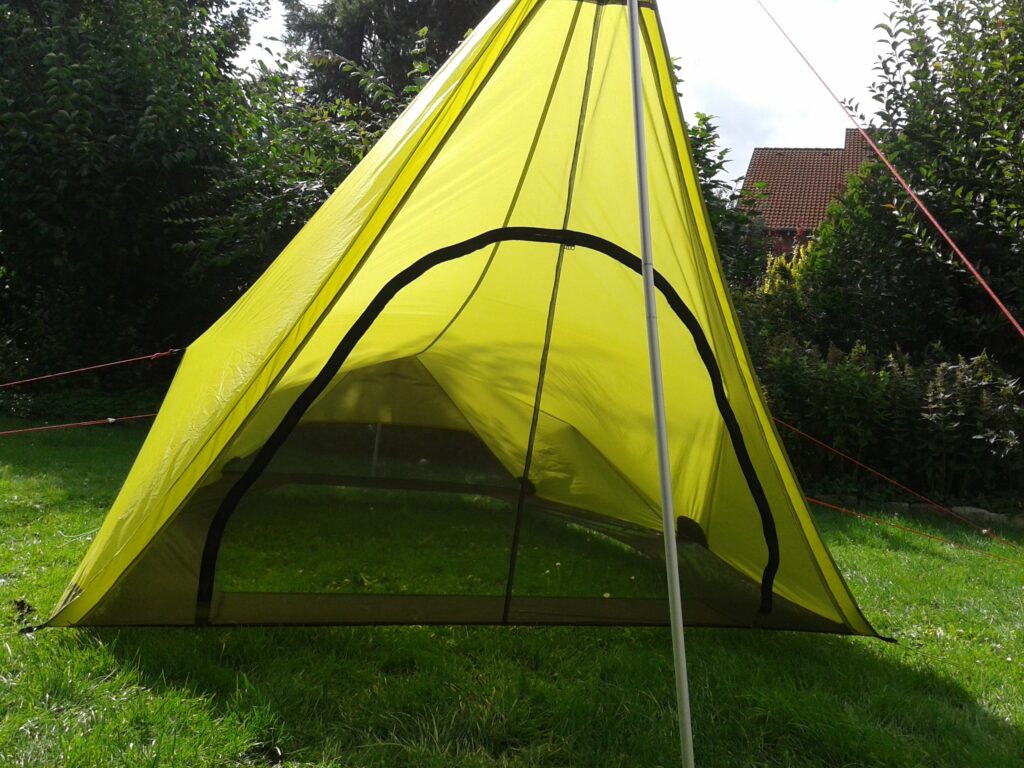

Am unteren Rand habe ich einen horizontalen Meshskirt eingenäht. Darauf liegt ein eingehängter Boden. Dieser lässt sich dadurch einfach austauschen und modular je nach dem zu erwarteten Untergrund einsetzen. Wird der Boden belastet, dichtet sich das Zelt so selbst gegen Insekten ab. Gleichzeitig hält der Meshskirt den Rand des Bodens nach oben, wodurch kein Wasser darauf fließen kann.
Die vier Lifter sorgen für ein gutes Raumgefühl, fast wie bei einem Tunnelzelt.
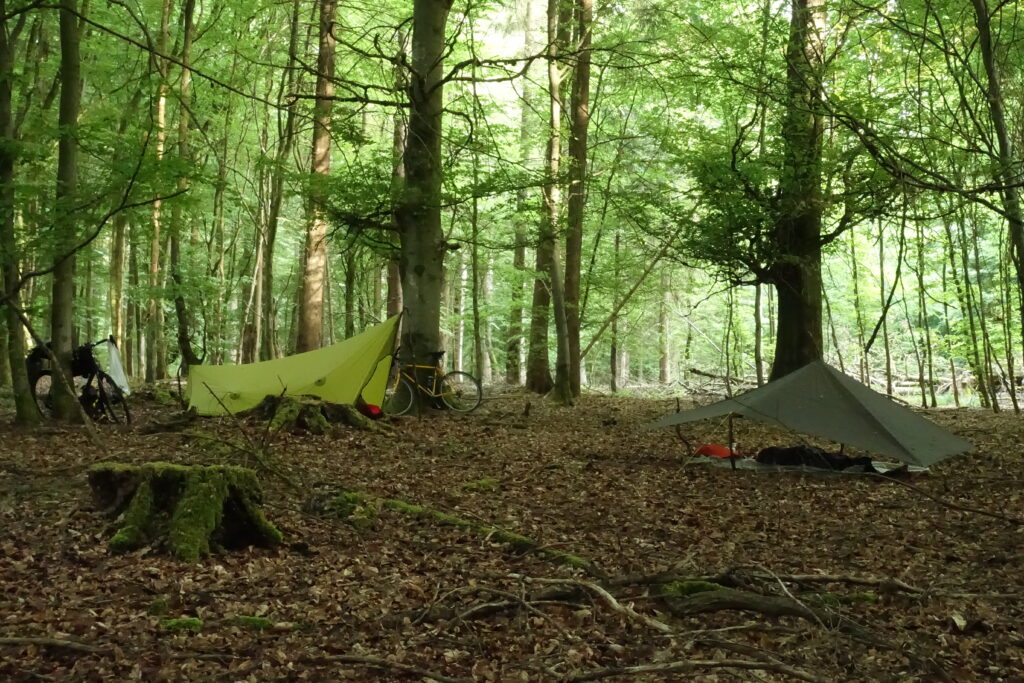
Dieses Zelt habe ich vor unserer Trekkingtour auf der Via Dinarica genäht. Das ist nun drei Jahre her. Seitdem nutzen wir das Zelt immer wieder in allen vier Jahreszeiten. Mit dem gesamten Konzept bin ich sehr zufrieden. Nur kleinere Details würde ich beim nächsten anders lösen.
Gewicht: 960g (inkl. Stangen, Heringen, Leinen, … )
Fly-Material: MEMBRANE Silpoly PU2000
Floor-Material: Hyper D300
Mesh: 25g/m²
Zipper: 3C YKK
Wenn ihr noch Fragen habt zum Zeltprototyp, diskutiert mit mir auf outdoorseiten.net oder schreibt mir eine Mail an mail[ät]raysgeardesigns.com.
Und falls du diesen Blog abonnieren möchtest, trag „raysgeardesigns.com/blog/feed“ in deinen Feed-Reader ein.
________________________________________________________________________
english version
________________________________________________________________________
RAY’S TENT (PROTOTYPE)

In the last years I have designed many tents and tarps. Many ideas were discarded, some were actually sewn. From these experiments I could derive the most important criteria for „the tent“ for two people.

The tent has a A-frame design. So you only need one entrance for both and save the second zipper and the second beak. The front has an overhang of a good 60cm. This protects the entrance from rain, you can cook under it in bad weather and the pole is not in the way when getting in and out. Inside there is a beak that can be stretched out in bad weather or as a privacy screen. You don’t even have to open the mesh front.

The highest point of the A-Frame is at the head end, the lowest at the foot end. As a result, air flows from the lowest point into the tent, warms up there through breath and body heat and leaves the tent unhindered at the highest point. Condensation on the inside is prevented by the constant air movement. In fact, in the three years that I have been using the tent now, I have had problems with condensation at most three times.

The foot end is protected from rain and wind by an outer beak. Therefore I always place this side in the wind. This also improves the air movement inside even more.


At the bottom edge I sewed in a horizontal mesh skirt. On top of it lies a suspended floor. This can be easily exchanged and used modularly depending on the expected surface. If the ground is loaded, the tent seals itself against insects. At the same time, the mesh skirt holds the edge of the ground upwards, preventing water from flowing on it. The four lifts provide a good feeling of space, almost like a tunnel tent.

I sewed this tent before our backpacking trip on the Via Dinarica. That was three years ago now. Since then we have been using the tent again and again in all four seasons. I am very satisfied with the whole concept. Only smaller details I would solve differently the next time.
weight: 960g (inkl. poles, stakes, cord, … )
fly-material: MEMBRANE Silpoly PU2000
floor-material: Hyper D300
mesh: 25g/m²
zipper: 3C YKK
If you got any more questions about this prototype of a tent, simple write to mail[at]raysgeardesigns.com.
And if you would like to subscribe to this blog, enter „raysgeardesigns.com/blog/feed“ into your feed reader.